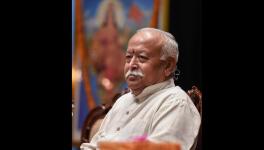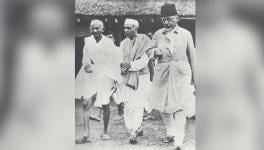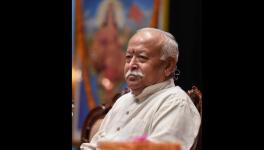Practice of Multiple Wives on a Decline in India: NFHS Data
Representational use only.Image Courtesy: muslimobserver.com
New Delhi: National Family Health Survey (NFHS) data has revealed that the practice of polygyny (multiple wives) is prevalent among multiple communities in India. At the same time, the data shows that the practice is declining across the country.
The latest NFHS data from 2019-20 revealed that polygyny is prevalent among 1.3% of Hindus, 1.9% of Muslims and 1.6% of other religious groups. The findings were released after an analysis of NFHS data from the last 15 years by the Mumbai-based International Institute of Population Studies.
"Overall, polygynous marriage was found to be higher among poor, uneducated, rural and older women. It indicated that socio-economic factors also played a role in this form of marriage in addition to region and religion," the authors noted.
Officially, polygyny refers to the "percentage of married women in the 15-49 age group who indicate that their partner has more on than one wife." The polygynous marriages decreased from 1.9% to 1.4% in the period 2005-06 to 2019-20. Northeastern states have a higher prevalence of the practice; it is 6.1% in Meghalaya and 2% in Tripura, respectively. In other regions, polygyny is more prevalent in states like Bihar, Jharkhand, West Bengal and Odisha than in their northern counterparts.
Among social groups, the practice is most present among STs (Scheduled Tribes), although it's showing a declining trend. In STs, polygyny was at 3.1% in 2005-06, which has reduced to 1.5% in 2019-20. Broadly, polygyny is more prevalent among Muslims than Hindus except in Tamil Nadu, Telangana, Andhra Pradesh and Chhattisgarh.
Having said that "others" dominated the prevalence of the practice among religious groups, at 2.5%, followed by Christians (2.1%), Muslims (1.9%) and Hindus (1.3%). The higher percentage among Christians can be attributed to the presence of polygyny in northeastern states.
While the general trend indicated that economic conditions and education backgrounds are important markers for the presence/lack of polygyny in a region, multiple districts in Tamil Nadu and the Northeast are exceptions to that trend.
Get the latest reports & analysis with people's perspective on Protests, movements & deep analytical videos, discussions of the current affairs in your Telegram app. Subscribe to NewsClick's Telegram channel & get Real-Time updates on stories, as they get published on our website.
























